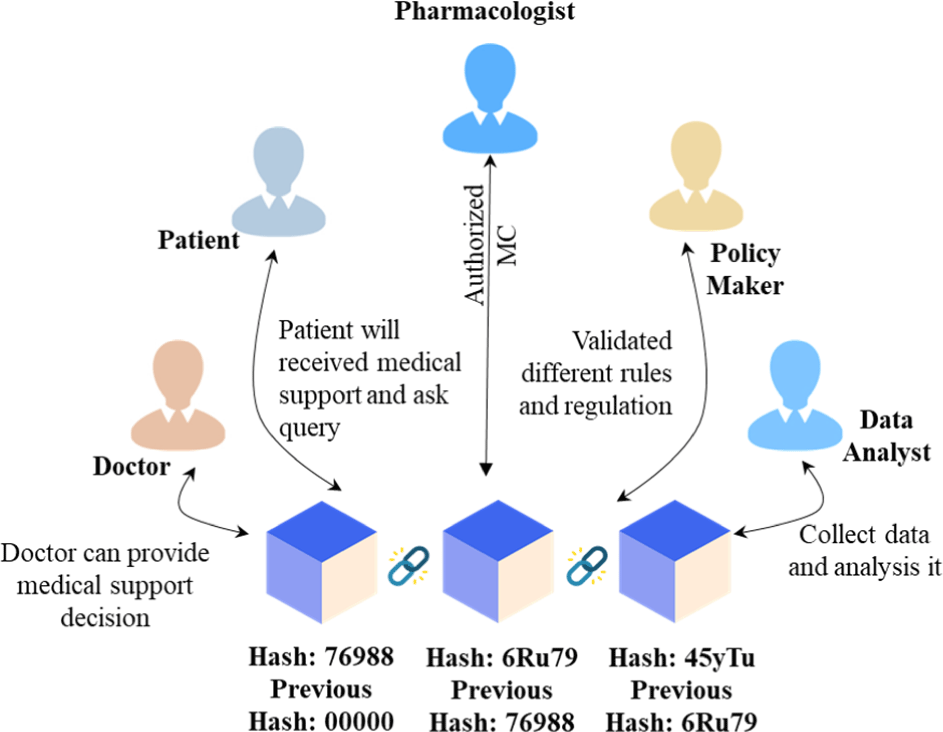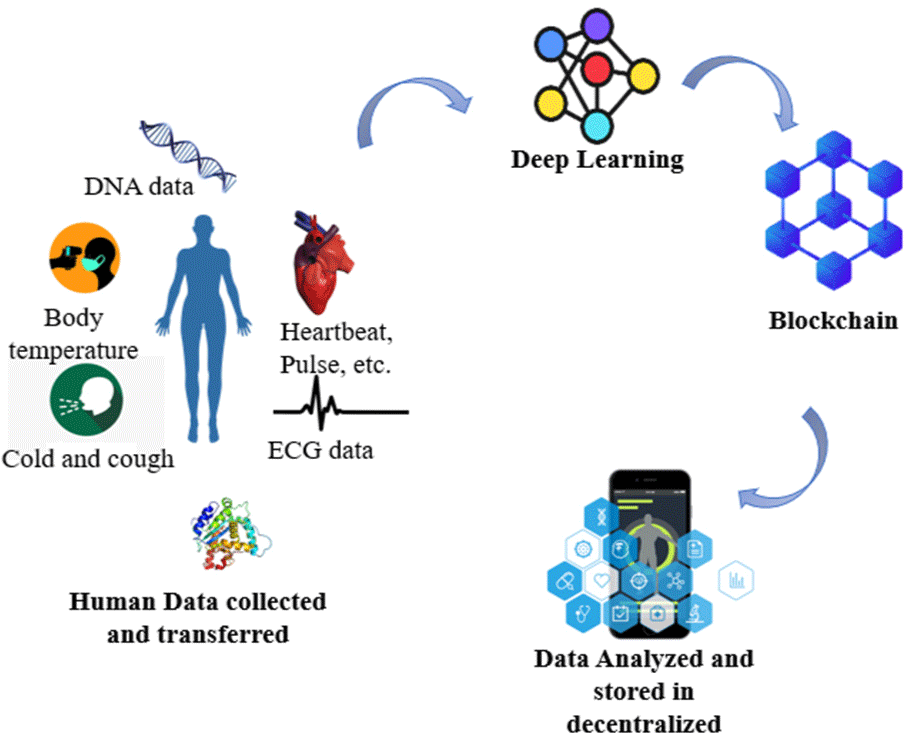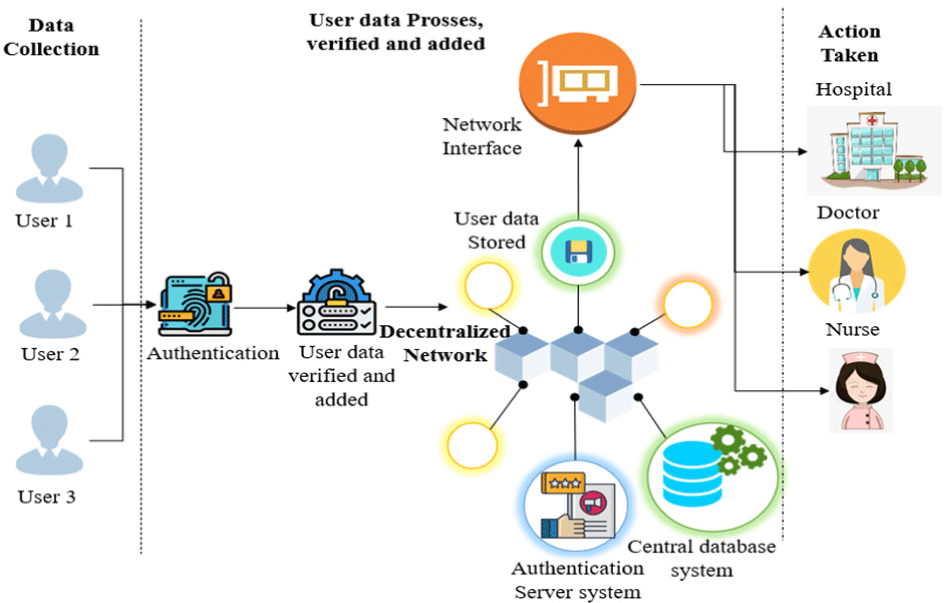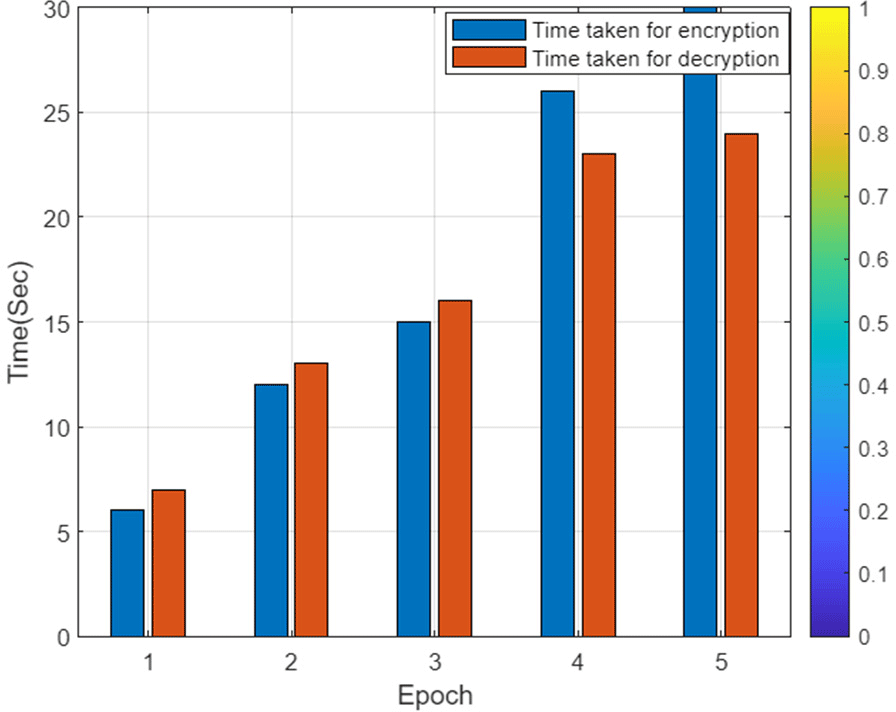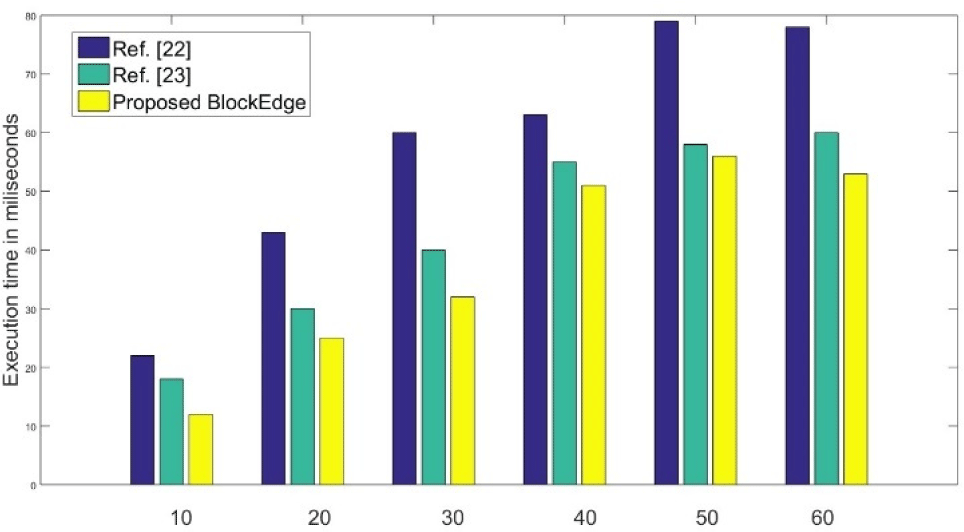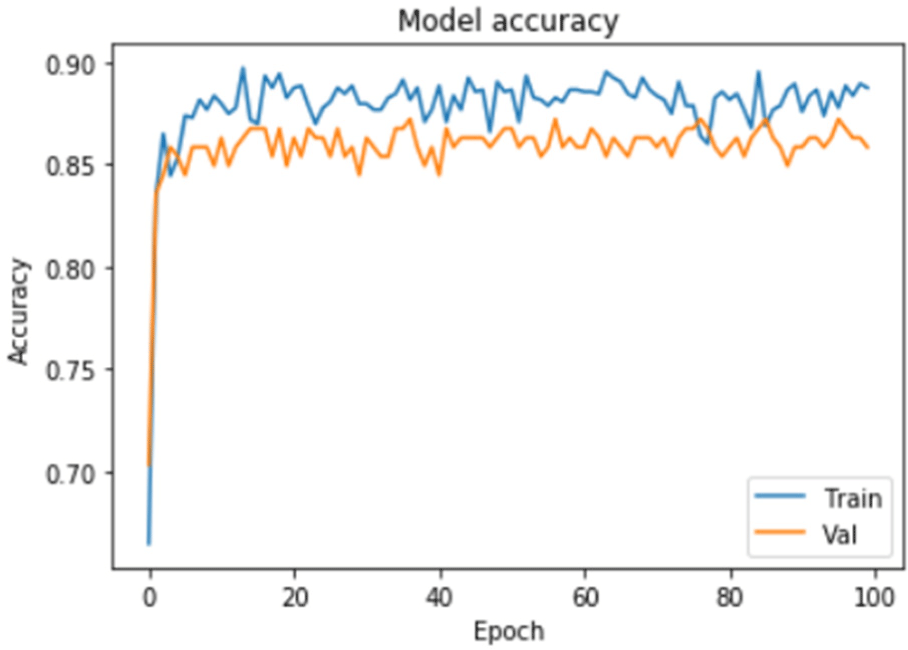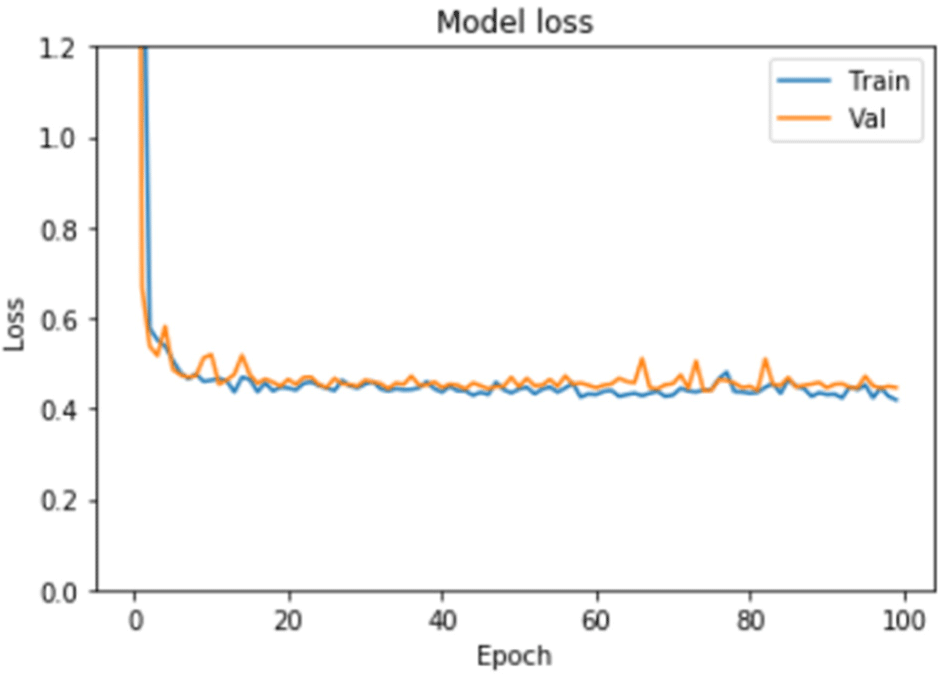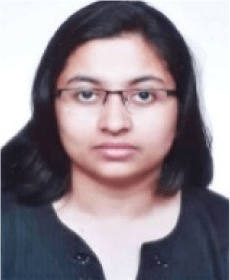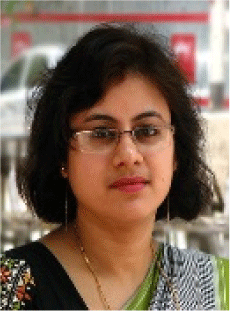I. INTRODUCTION
Blockchain and artificial intelligence (AI) technologies are novel breakthroughs in the medical sector. Several governing authorities use information gathered from Google surveys to build medical metrics. Numerous government agencies use information from Google surveys to create health indices. Blockchain technology makes it easier to store the encrypted data that AI demands. Blockchain allows medical professionals to examine patient health information, and AI will employ a variety of recommended algorithms, decision-making skills, and enormous volumes of data. Therefore, the medical service will become more cost-effective and efficient while democratizing healthcare by adopting the most recent innovations [1]. A speedier identification and diagnosis of illnesses with computerized therapy options and evaluations are now possible because of emerging technologies' better capacity to handle massive data sets in real-time. Blockchain technology additionally improves transparency and facilitates communication between patients and healthcare providers.
To reuse commercial medications and investigate the efficacy of prescription compositions and dose measurements, clinical studies can be tracked using numerical drug design techniques and artificial intelligence. Agencies must choose the best methods for leveraging resources and expediting transformation while upholding the necessary consistency and conformance in light of this rapidly changing environment [2].
Blockchain technology allows it to create and maintain information blocks known as ledgers and to analyze data in a safe and appropriate model [3]. Blockchain helps in the examination and forecasting of medical data. According to examine, technology allows in many ways, including evaluating medical supply files, coming across computerized training with pharmacological warnings, successfully implementing health and treatment areas, and the potential for remounting. Medical experts, healthcare professionals, and payers receive fast updates thanks to the collected medical data. The integration of AI and blockchain further improves this. Machines can now determine fitness trends and patterns thanks to AI. AI contributes to predictive accuracy and makes it easier to evaluate medical data. To account for the aforementioned factors, researchers have utilized diverse methodologies leveraging blockchain and deep learning techniques. A store of medical data generated in clinical settings and incidents is an electronic medical record (EMR). As awareness and personal care technology have grown, timely patient information is now provided and has long-term clinical value. Blockchain technology has completely changed the healthcare industry in several ways. Pharmaceutical record management improves confidentiality and accessibility while guaranteeing safe and unchangeable information regarding patient preservation. Transparent, verifiable transactions help medicinal supply chains lower the danger of imitation. Blockchain is used in telemedicine to provide secure patient-doctor interactions that guarantee anonymity for patients. Decentralized data sharing promotes research and development by encouraging cooperation and preserving data authenticity. Fig. 1 demonstrates it (Table 1).
| SL no. | Short form | Abbreviation |
|---|---|---|
| 1 | BC | Blockchain |
| 2 | AI | Artificial intelligence |
| 3 | DL | Deep learning |
| 4 | ML | Machine learning |
| 5 | EMR | e-medical record |
| 6 | IoT | Internet of things |
| 7 | IoMT | Internet of medical things |
Key contribution:
-
The model that is being presented creates a novel blockchain-based encryption system using deep learning (BcEs-DLM)for safe medical data management.
-
It provides individuals with the ability to manage data accessibility, granting read/write access to hospital authorities, and triggering precautionary agreements.
-
The suggested methodology can produce an ideal key and encrypt medical information using the block cipher technique.
-
The detection process is performed using medical record sharing.
-
The experimental results of the HBESDM-DLD model are thoroughly analyzed, considering a variety of performance measures. These measures are based on benchmark medical datasets, ensuring the reliability and accuracy of the analysis.
Paper organization:
To make the article readable, it is divided into sections. Section 2 discusses the terms blockchain and distributed ledger about e-health platforms. The proposed system is discussed in Section 3. The potential application of this notion is described in Section 4. The result part is discussed in section 5. The manuscript's concluding discussion is summed up in Sections 6 and 7. The final portion brings the article to a close. The reader can gain a basic understanding of the applications of blockchain and AI in health by reading this research paper's detailed discussion of the system's whole process and strategy
II. RELATED WORK
The clinical decision support system consists of three main types. Among them is the laboratory information system, which serves as the primary platform for lab personnel to store data and furnish healthcare providers with laboratory results.
A decentralized healthcare system is made to monitor, gather, preserve, and send user information, and the structural system maintains all of the evidence gleaned from the healthcare repositories. The client management solution, the healthcare information system, and the medical support services get the data from the information system once it has been processed. Additionally, it inputs data into an electronic medical record that doctors may access at the customer's premises. The healthcare information system serves as the main method for psychological staff to both store information and relay lab consequences to medical workers. Information gathered from the patient management system is consolidated and stored within the patient information database, contributing to the development of the electronic medical record (EMR). Table 2 offers a comprehensive comparative analysis of the latest research on blockchain technology in the healthcare industry. By examining this data, we aim to provide you with a clear understanding of the distinctions between existing studies and our proposed work. This evaluation will help you gauge the uniqueness and value of our research about what has already been done in this field.
| Sl No | Ref. | Objective | BC | IoT | DL |
|---|---|---|---|---|---|
| 1 | [2] | To provide a secure, robust, and distributed healthcare system. | ✔ | ❌ | ✔ |
| 2 | [4] | A survey on blockchain-based technology with challenges | ✔ | ✔ | ❌ |
| 3 | [5] | A blockchain-based framework for medicine | ✔ | ❌ | ✔ |
| 4 | [6] | An intelligence architecture using blockchain and AI | ✔ | ✔ | ✔ |
| 5 | [7] | Combined framework using blockchain and AI | ✔ | ❌ | ✔ |
| 6 | [9] | A secure, authenticate IoT-based healthcare system | ✔ | ✔ | ❌ |
| 7 | [11] | Provide the benefit of a joint combination of blockchain with IoT | ✔ | ✔ | ❌ |
| 8 | [10] | Architecture with the major goal of user blockchain and AI | ✔ | ❌ | ✔ |
| 9 | Proposed work | Novel BcEs-DLM model has been created for safe data transmission and diagnostics. The model provided in this study consists of several stages of activities to ensure effective outcomes. | ✔ | ✔ | ✔ |
This area delivers an outline of the relevance of blockchain and Deep learning assistance in electronic healthcare. A centralized architecture, like the one used in traditional EHR systems, involves a central organization that has complete control over the entire system. This structure ensures efficient management and coherent functioning of the system. AI can carry out intricate computations and quickly evaluate vast volumes of client records. Despite DL's incredible abilities, which have shown that it can complete many dynamic and intellectual operations quicker than a person, some doctors are still hesitant to use AI to affect a participant's well-being [4-5]. Additionally, a survey conducted as part of recent research [6] revealed that detachment exhibits an inverse relationship with the use of health facilities [7]. These days, the two technologies that have each shown promise for the healthcare sector's expansion are artificial intelligence and blockchain. The research establishment has expressed interest in applying these approaches to the data processing of EHRs. In contrast, blockchain usage in the medical industry has increased. It resolves network issues with existing EHR frameworks to prevent alteration and malicious abuse of customer information. Several EMR-based software types, like Epic, are presently using live AI solutions to forecast hospitalizations, client risk profiles, fatality, and clinical degradation. Likewise, patients now have access thanks to the blockchain-based MedRec platform. Blockchain technology has revolutionized the way healthcare data is shared, ensuring maximum security and integrity. On the other hand, deep learning algorithms are making use of extensive medical datasets to enable predictive analytics, diagnostics, and personalized treatment advancements. This combination is truly transforming patient care for the better, enhancing accuracy and efficiency in healthcare practices, as shown in Fig. 2.
Scientists have employed diverse methodologies involving blockchain and AI techniques to investigate the aforementioned findings The hospital can review information at a high level thanks to a variety of skills but at the cost of significantly reduced information security or the ability for specialized experts to access their data for a limited period. As a result, the key goal of this paper is to highlight the efforts of the experts to shed light on the role and efficacy of DL-blockchain in EMR methods [9].
With a focus on DL and the Internet of Things that have yet to be combined, this examination analyses the impacts, suggests a study area, and explores the use of decentralization in different domains like food and health [10]. The advancements in new technologies have expanded their capabilities to analyze extensive instantaneous datasets, allowing faster detection and diagnosis of illnesses. Additionally, these technologies offer automated options for treatments and assessments. Furthermore, blockchain expertise enhances transparency and communication between patients and healthcare specialists.
III. PROPOSED SYSTEM
The system depicted in Fig. 3 illustrates the procedural workflow of the BcES-DLM model, encompassing three main stages data collection, validation with detection, and delivery. In operation, it has four crucial phases: data encoding, optimal key derivation, robust data governance, and diagnostic protocols. In the initial step, patient health records undergo encoding through an advanced cryptographic method, with the optimal key derivation process playing a fundamental role. Subsequently, the incorporation of blockchain technology ensues, featuring both a global blockchain and multiple local blockchains tailored for medical institutions. Within this framework, patients retain the ability to grant or revoke access to their health records for healthcare practitioners or healthcare entities. Following the establishment of permissions, authorized users can decrypt the encoded data, thereby accessing authentic health documents of the patient. The ultimate phase of the process involves the execution of diagnostic protocols to ascertain the presence or absence of a specific disease.
In the domain of cryptographic methods, lightweight approaches are typically represented by hash functions, streamlined encryption techniques, authenticated decryption, and modeling procedures for secure data handling. Within this research context, streamlined encryption methods are employed for the secure management of healthcare information. The advancement of lightweight cryptographic techniques commences with an enhanced iteration of the Advanced Encryption Standard (AES).
This is a defined function with keys value.
where Cir, Pin is the ciphertext and plaintext and Deck, Enck represented decryption and encryption.
Blockchain technology protects patient information and guarantees confidentiality and openness in the medical field. Accuracy increases when deep learning algorithms examine medical information to forecast and diagnose diseases.
Deep learning helps with medication development in the pharmaceutical industry, whereas blockchain verifies the drug supply chain. Platforms for telemedicine use these two technologies to provide safe and effective consultation. This combination improves accessibility to information, evaluation, and security. In Fig. 3 it is illustrated pictorially. Algorithm 1 illustrate secure method for keeping health data. The key generation equation.
To establish a secure and transparent system, we employ a blockchain-based network to facilitate a shared ledger. This ensures that all parties involved, such as doctors, medicines, lab reports, and patients, are required to register themselves with appropriate credentials. By doing so, we can ensure the authenticity and reliability of the information exchanged within this network.
Start
EhR← user data and keeps them in the health record
Generate key pairs← Pubk, Privk using block cipher
Pubk ←public key for encrypted data
Health care expert ← Pubk shared with data
Encrypt EhR ← Pubk
Ops ←generate optimal solution
DLMa ←generate disease diagnosis using EhR, Pubk
Data updated in blockchain with specific userid, password, clientID
Keep every data ← hashk
Secure clientIDin blockchain
Stop
IV. FUTURE SCOPE OF DEEP LEARNING AND BLOCKCHAIN TECHNOLOGY FOR HEALTHCARE
Researchers examining machine learning are now using several algorithms to monitor and detect the hormone markers of chronic illnesses (such as diabetes, Alzheimer's disease, cognitive impairment, etc.) and are working to increase the precision of these processes [11-12]. Future research will prioritize biological monitoring. Authors have suggested the Spark method to do the categorization of natural pictures.
The Internet of Things can usher in a new era through its ability to facilitate interaction with adjacent people or items. Present research facilitates healthcare specialists in accessing clients' statuses through the Internet of Everything [13]. This information can be scrutinized and stored in a database for future reference, helping to prevent or address any major issues that may arise. However, access controller concerns may emerge due to the all-encompassing nature of front-end internet of everything devices like moisture sensors, card readers, wearable bands, mobile devices, and other interconnected computer networks [14-15]. While the Internet of Things offers advantages such as transparency and efficiency, there exist potential undisclosed risks to the security of medical data. [17]. Security and privacy are thus crucial trends for research consideration.
V. RESULT AND DISCUSSION
Within this segment, the efficacy of the proposed method is affirmed through its application on three medical datasets: Heartbeat and age, dataset. The initial Heartbeat dataset comprises 200 instances containing 10 attributes. For further information regarding this dataset, please refer to Table 3 for a comprehensive breakdown. We opted to utilize the Go language for our chain coding needs, in addition to leveraging deep learning techniques with the help of the Google Colab framework. By combining these powerful tools, we were able to achieve significant advancements in our chain coding processes.
| Parameter | Heart beat | Age |
|---|---|---|
| Number | 200 | 25 |
| Number | 10 | 10 |
| Class | 2 | 2 |
| Data source | Own | Own |
Table 4 and Fig. 4 provide a comprehensive security analysis of the encryption and decryption method proposed for three distinct datasets. The results illustrate notable advancements in security measures including encryption time, decryption time, and overall security level.
| Size of data | Time taken for encryption | Time taken for decryption |
|---|---|---|
| 10 | 6.11 | 6.16 |
| 30 | 12.22 | 12.63 |
| 50 | 15.53 | 15.66 |
| 70 | 26.00 | 23.11 |
| 90 | 30.11 | 23.65 |
Examining the values presented in the table, it becomes evident that the proposed technique demonstrates enhanced security across various parameters. Specifically, when considering the heart statlog dataset comprising 10% of the total data, the proposed technique showcases significant improvements. Encryption is accomplished in a swift duration of 6.11 seconds, while decryption is efficiently executed within 6.90 seconds.
These outcomes affirm the efficacy of the proposed encryption and decryption approach, highlighting its capability to deliver heightened security measures in terms of processing speed and security level across diverse datasets (Fig. 5).
Upon completion of the training process (Fig. 6), our proposed deep learning model attained an impressive accuracy of 97 percent (Table 5).
| Method | Precision | Recall | F score | Accuracy |
|---|---|---|---|---|
| BcEs-DLM | 0.94 | 0.96 | 0.95 | 0.97 |
It's evident from the observation that the validation loss closely aligns with our training loss depicted in Fig. 7.
The "BcEs-DLM" method demonstrates robust performance in classification, showcasing 94% precision (accuracy of positive predictions), 96% recall (actual positives identified), a balanced F1 score of 0.95, and an impressive 97% accuracy, indicating high overall correctness in its predictions across classes.
VI. CHALLENGES
The use of blockchain and AI in healthcare is still in its early stages. Therefore, more research is needed to understand the difficulties that lie ahead [10]. This study is just concerned with the healthcare system. Several other sectors shown in Fig. 4 might benefit from combining blockchain technology with IoT and DL.
VII. CONCLUSION
In this study, a novel BcEs-DLM model has been created for safe data transmission and diagnostics. The model provided in this study consists of several stages of activities to ensure effective outcomes. The health record transmission procedure offers a higher level of security when a cipher is initially used for the key generation process. On the other hand, blockchain technology offers secure health record management, enabling patients to control access to their medical information for doctors and medical facilities. Additionally, deep learning-based scanning plays a crucial role in the diagnostic process to identify the presence of illnesses. The BcEs-DLM experimental results were studied using a benchmark medical dataset, and their findings were assessed using a range of performance metrics. The results of the experiment demonstrate that our methodology surpasses cutting-edge techniques, achieving a remarkable 97% success rate.
The future investigation examines the practical difficulties of integrating three incompatible technologies—Blockchain, IoT, and DL—onto a shared network in a dispersed setting.

